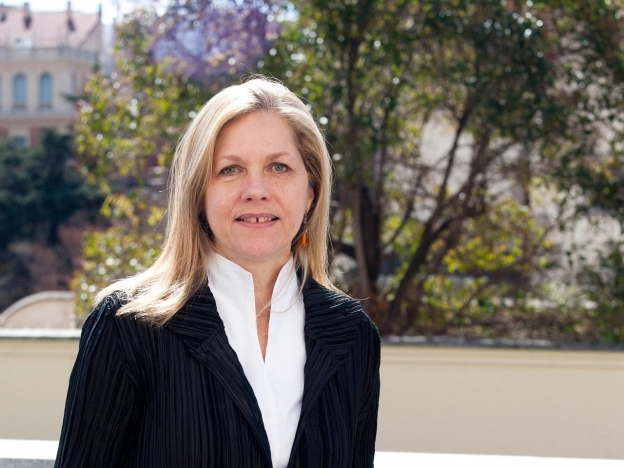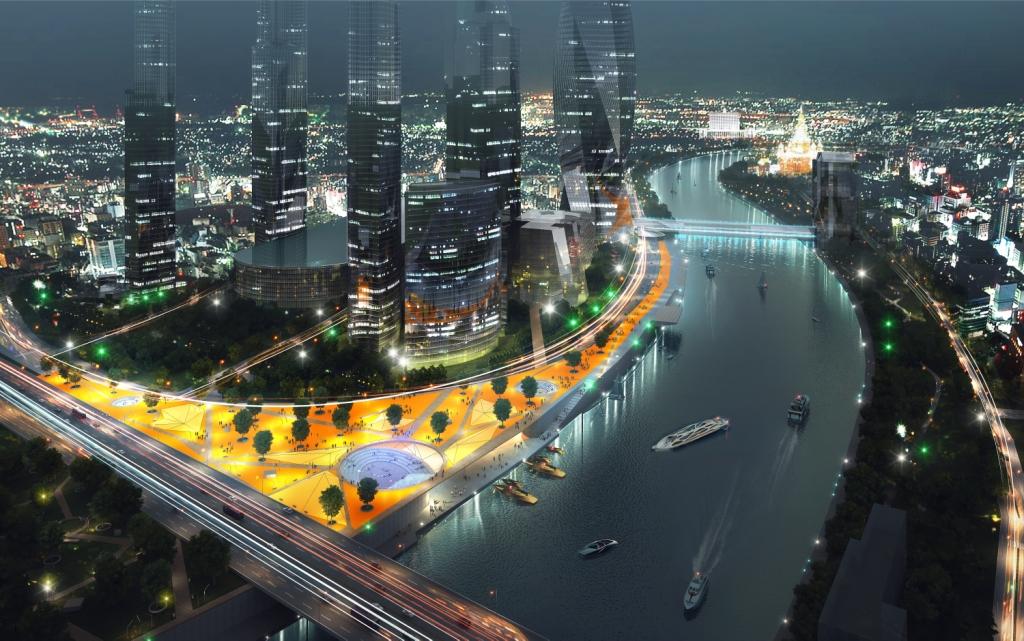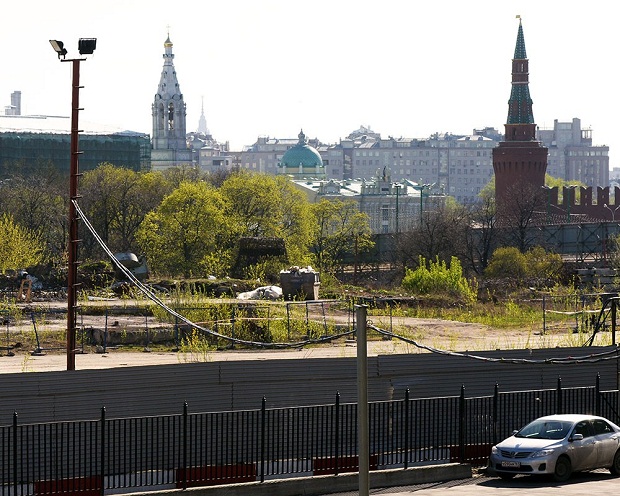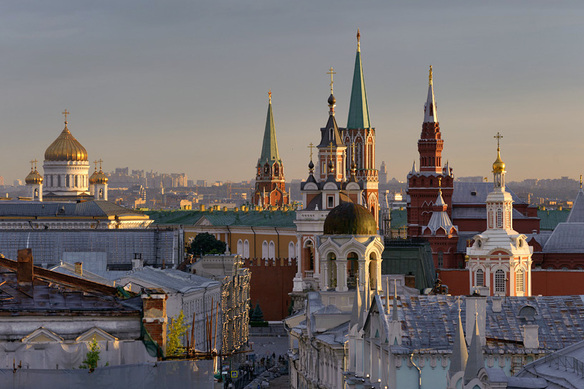Experts — on formation of permeable public spaces on the example of Sofia Embankment

ArchCouncil talked to members of the jury of the international competition for Sofia Embankment area construction about tendencies for formation of ’loyal’ for people public spaces in the city. Our questions are being answered by Executive Director of the Pritzker Prize, Associate Dean for External Relations at IE School of Architecture and Design Martha Thorne and architect, planner and founder of Mae Architects Association Alex Ely.
— You have participated in the jury of the big architectural competition for the concept of Zaryadye Park project. And now there is a competition in place for the construction of the parts of Golden Island on Sofia Embankment. How can the implementation of these projects help to solve the problem of the formation of public space ‘loyal’ for people?
Martha Thorne. Both these projects are very interesting, they are located within proximity to the Moscow River and, doubtlessly, they would greatly influence the adjacent areas. They can become an example for the future development in the other parts of the city. The main issue that was solved by Zaryadye Project — what is a park in the 21st century; how the concept of ‘public space’ can influence the routine of local community, and, at the same time, remain comfortable for tourists.
.jpg)

Sofia Embankment plot, which is the object of the last competition — is a task of completely different sort. Here we are already talking about, how a private construction will influence the public space in the city centre. One more key issue is — how we can create a new community that will be in natural interaction with historic buildings, take care of historic heritage. Architects must ensure that these historic objects are not perceived as the monuments of the past, but they can become a part of the modern public space.
And, of course, both of these competitions solve one global issue: how Moscow will develop the urban area, the river itself and the traffic aspect along the river. Of course, the projects are implemented within limited areas, but, in fact, it turns out that their impact goes beyond these boundaries.
— If we are talking about implementation of the long-term concept of the Moscow River, is it feasible in the conditions of the modern market and metropolis to obtain the chain of connected public spaces?
М.Т. When we talk about cities that actively develop in tune with the times, we always pay a lot of attention to the transport infrastructure. Let’s take, for example, London. Where the law restricts the free circulation of private traffic in the city, and parking spaces next to new buildings are allowed only for handicapped people. Thus the main issue, raised in the development of all large cities, is the following: public transport — is the right strategy for the future development of the city. In case of Moscow this is a problem of much larger scale, and, of course, it extends far beyond the boundaries of competition projects. But I hope that when people see the development of these two building areas, they will look into the future, based on the new strategy of development of the metropolis.

— The Moscow River has in its central part ‘a water frontline’. At the Sofia Embankment it is, for example, formed by historic buildings. But if we talk about the development of the river outside the centre, should the buildings have more open character, interact more closely with the river and with inhabitants?
М.Т. This is the key, because a river has never only one personality, that is why there should be different strategies and types of land use. That is how I see the urban planning: at first, a global general strategy should be developed, followed by the step-by-step implementation of this strategic plan. Gradually, main objectives and goals will line up. In case of the Moscow River, it should be defined, what has to be built, what kind of amenities should exist outside the city border along the river, who is the land owner, and only then we should revise strategic and short-term perspective of the future development options of these embankments. Especially, it regards landscape plans, as they follow much longer time frames than any political short-term projects. The area outside the Moscow centre limits is ready for planning; there are a lot more opportunities for establishing the interaction between people and for creation of any unexpected points of attraction.

— Returning to Sofia Embankment, what type of development would be the most appropriate there?
М.Т. According to the project there is planned the residential development, but, of course, the site will not be closed and fenced. There will be the entire spatial hierarchy: private and semi-state, public and semi-public construction. The area should obligatory be permeable, such a crucial site cannot be closed to say: ‘This is private.’ Visually it should create the impression of the openness, and physically it should be open to the public. In my view it should be a living community, where you can sit, talk... cafe, benches, bicycle paths, a playground for children, etc.
— What mechanisms do exist abroad for promoting architecture?
М.Т. In my opinion, the best promotion for good architecture — is education. After all, the only means of getting good architecture — is desire of the public and inhabitants to have such architecture.
.jpg)
— Today the main tendency for development of the urban space — is creation of the space, which is maximally ‘loyal’ to people. How this problem is solved in the competition for Sofia Embankment?
Alex Ely. The most important thing taken into attention — was landscape design, correct place making of design elements and good urban concept. Precisely, these three points are indicators for professionalism and competency. Six architectural firms, which got shortlisted on the final competition list — are, in the first place, great urban designers. And the most important is that in their projects they have focused not only on urban planning, but they have also taken into account how the buildings would be naturally matched up with the embankment.
— What historical parameters of Sofia Embankment should be taken into account by the competitors?
A.E. Here, there are, of course, natural limitations, but also new opportunities. The winning scheme is: to preserve the respect towards the historical heritage, which is already located there, but, at the same time, to do the utmost to have the amazing view of the Kremlin. This exactly is the challenge for urban planners and architects, who in the construction of new buildings should take into account not only a beautiful view, but also the quality of details. A lot of attention should also be given to the quality of architecture, taking into account the historical context.

— Will this new project fit into the existent ‘water frontline’ of the Moscow River?
A.E. The water frontline is now represented by two historical buildings, and in the competition’s task is, of course, included their renovation. And all new buildings will be built mostly in the background and will not be included into this line.
— How about the development, adjacent to Bolotnaya Square?
A.E. Here, each of the finalists shall decide on their own, seek new interesting ideas. It is absolutely clear that there should be a free access to the river, as well as to Bolotnaya Square. That is, it is not the district that is fully closed to the public; it will be permeable due to the walkways.
— What should be the nature of this new development?
A.E. Of course, it should not mimic the historical one. I think, all six competitors’ teams perceive in a totally different manner the future development, and it is intriguing. I think that some of the projects will be very considerate, calm, and, for certain, there will be projects that are more ambitious, more expressive. We shall see!
— What prospects does this project promises to the city?
A.E. Of course, this project will contribute to the serious improvement of this area, entire Sofia Embankment. It is directed towards its greater opening to the public. Now the main problem of this site — is excessive traffic. In this respect, we have to work with the city, to improve the situation, to strengthen the public sector. It is not only about this project (note: for construction of Sofia Embankment), but in general about projects, united by the common subject of the Moscow River, for example, Zaryadye Park. This is like the parts of the jigsaw, which main objective is to make the city more accessible.
— In your opinion, is the format of architectural competitions suitable for solving this task?
A.E. Competition is a great mechanism for promoting architecture, because this method allows selecting the best designers. In this competition it will be extremely difficult for our jury to choose a winner. But the public will understand, how good is one or another architectural solution.
- Tags:
- competitions |
- embankments





